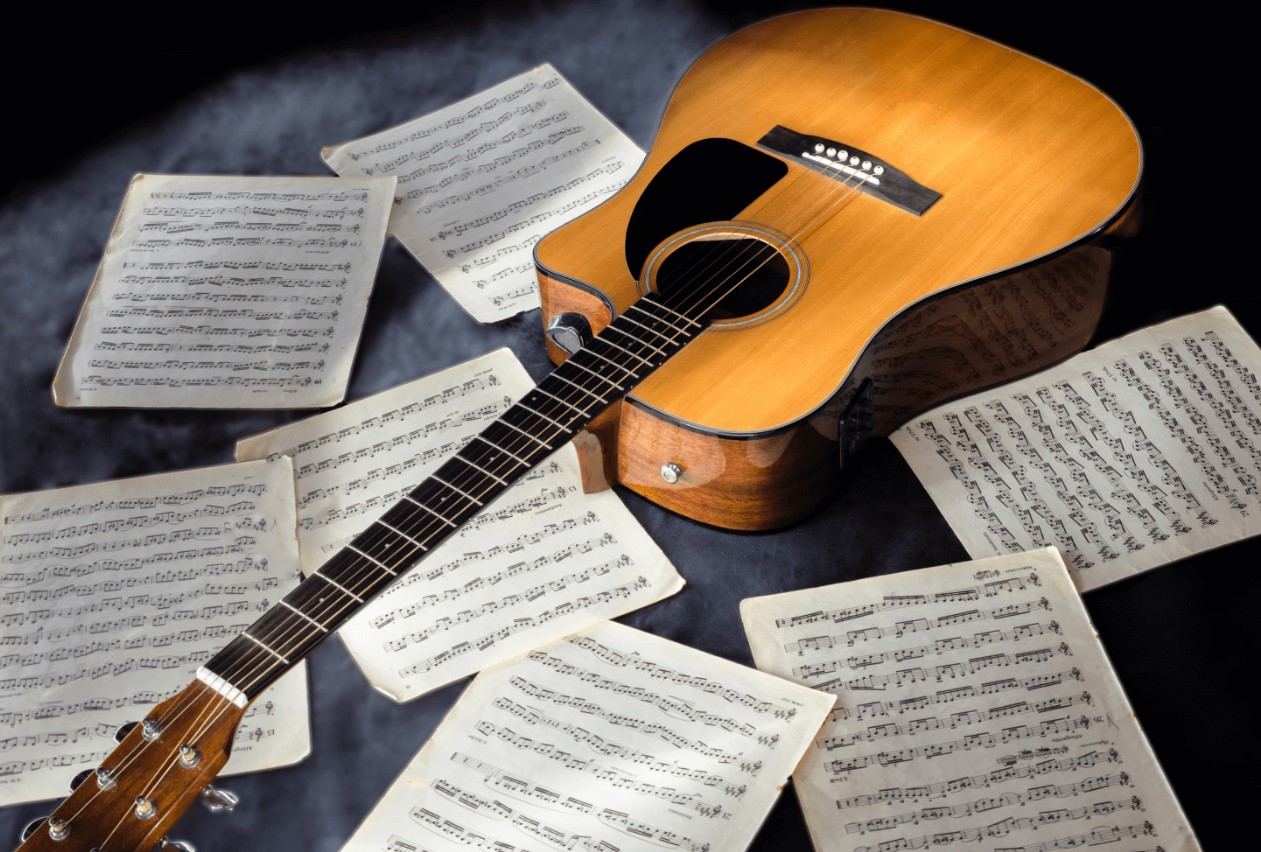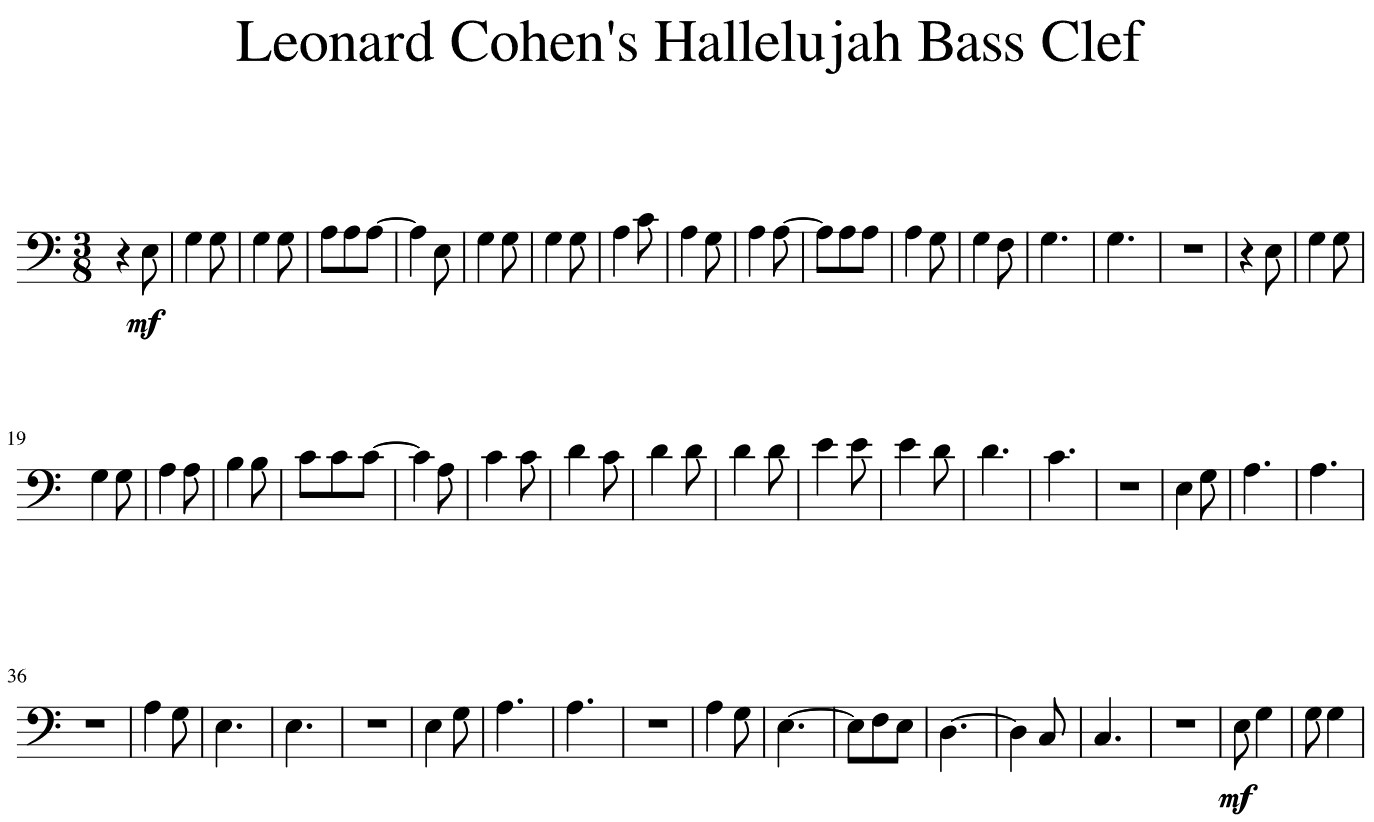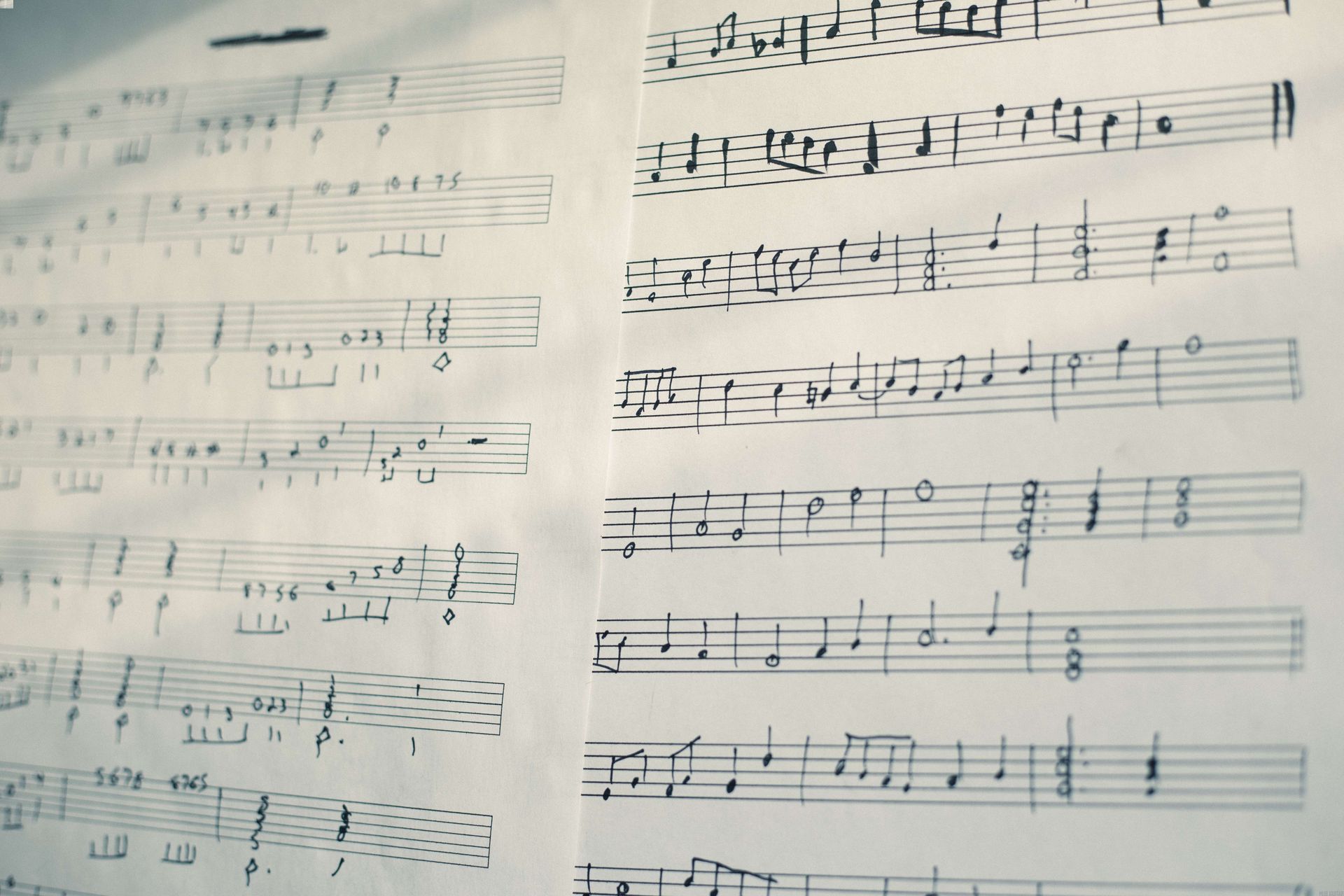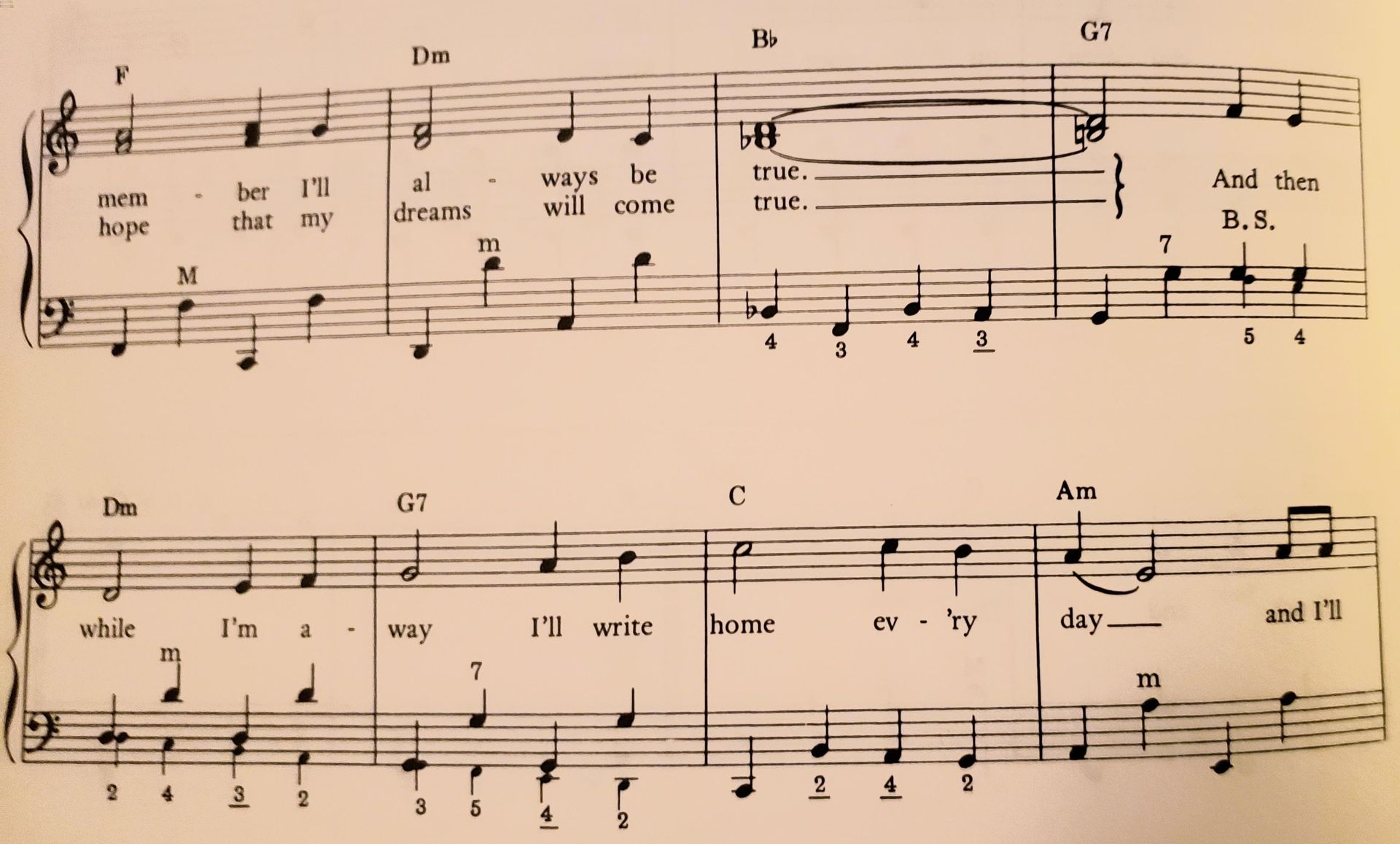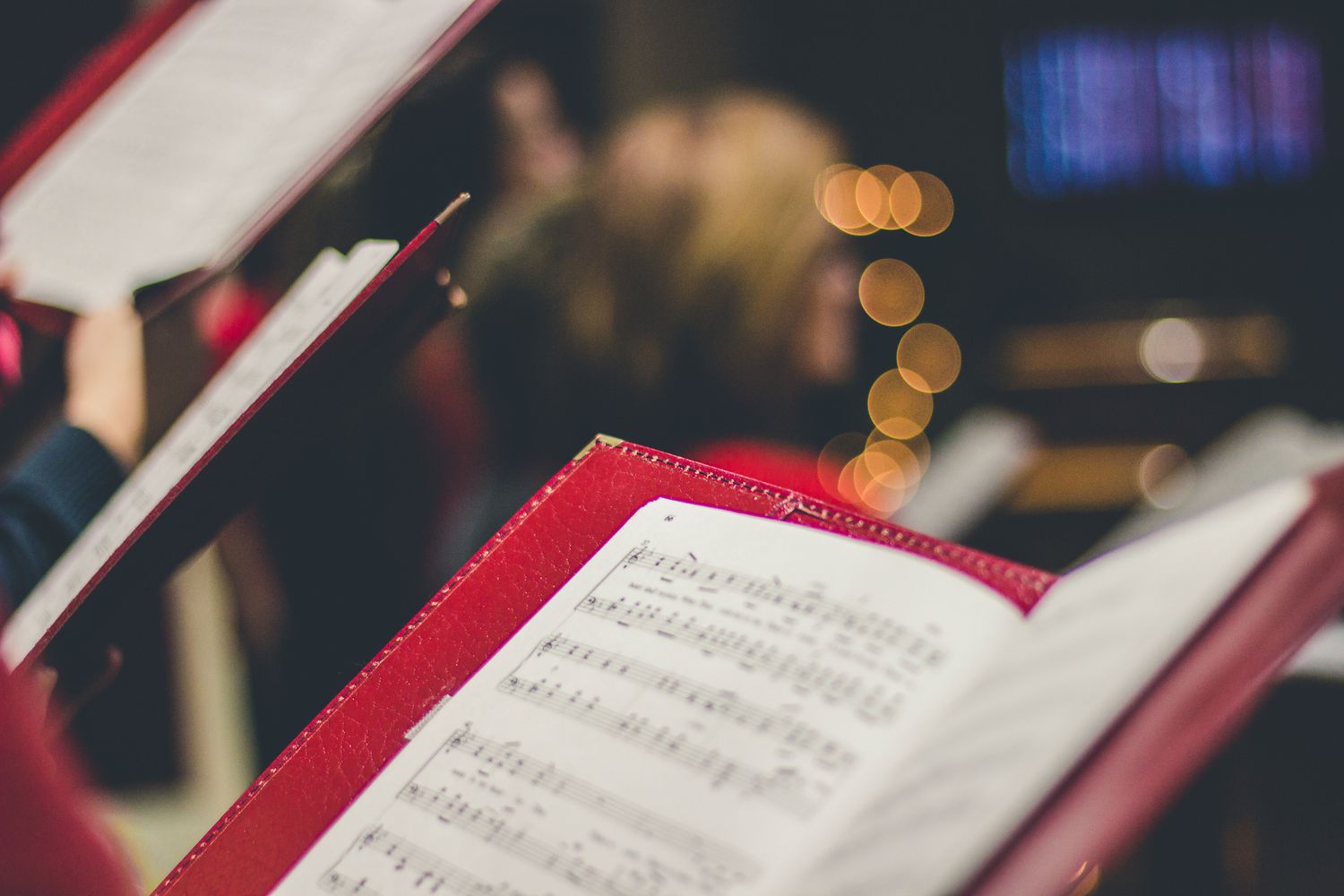Home>Production & Technology>Sheet Music>How Do I Read Piano Sheet Music
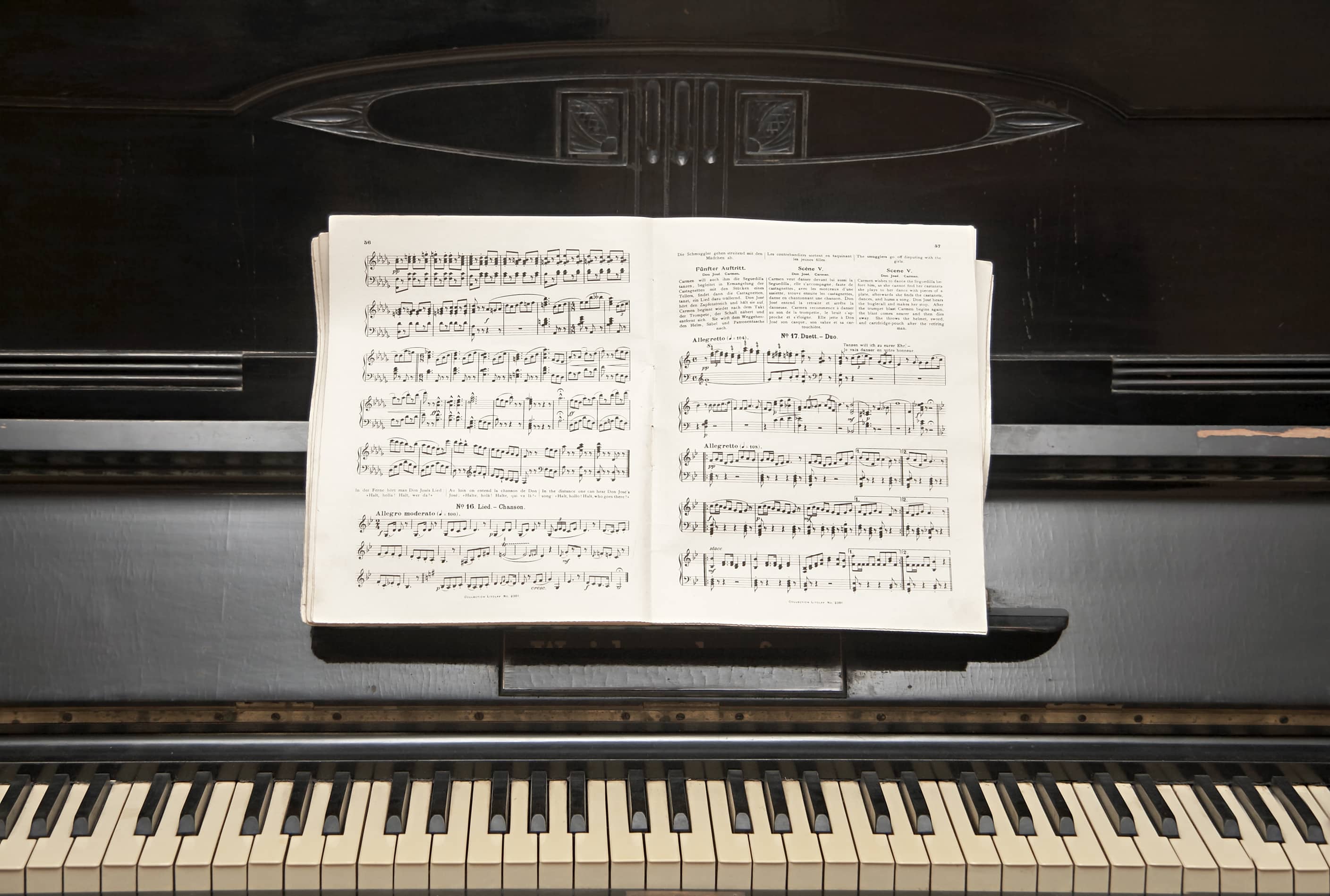

Sheet Music
How Do I Read Piano Sheet Music
Modified: January 22, 2024
Learn how to read piano sheet music and play your favorite songs with ease. Explore step-by-step tutorials and master the art of interpreting sheet music.
(Many of the links in this article redirect to a specific reviewed product. Your purchase of these products through affiliate links helps to generate commission for AudioLover.com, at no extra cost. Learn more)
Table of Contents
- Introduction
- Basics of Music Notation
- Understanding the Staff
- Learning to Read Notes
- Note Values and Durations
- Key Signatures and Scales
- Reading Rhythm and Tempo Markings
- Dynamics and Articulation Markings
- Expressing Phrasing and Interpretation
- Notating and Reading Chords
- Additional Symbols and Techniques
- Tips for Improving Sight-Reading Skills
- Conclusion
Introduction
Sheet music is the written representation of music that allows musicians to interpret and perform a piece accurately. Whether you are a beginner or an experienced pianist, understanding how to read piano sheet music is essential for your musical journey. By learning this skill, you gain the ability to play a wide variety of musical genres and express your creativity through the keys.
Reading sheet music may seem daunting at first, but with practice and guidance, it becomes easier and more enjoyable. This article will provide you with a comprehensive guide on how to read piano sheet music, breaking down the basics of music notation, understanding the staff, interpreting notes, and exploring various symbols and techniques. With the knowledge gained from this article, you will be well-equipped to navigate through any piece of sheet music with confidence.
Mastering this skill opens up a world of musical possibilities. With piano sheet music, you can explore classical compositions by legendary composers like Bach, Mozart, and Beethoven. You can also delve into contemporary music, from pop songs to jazz standards. Whether you aspire to perform in front of an audience or simply enjoy playing for your own pleasure, understanding how to read piano sheet music is a fundamental step towards achieving your musical goals.
Throughout this article, we will cover the basics of music notation, including the staff and notes. We will delve into various aspects of sheet music, such as note values, key signatures, rhythm and tempo markings, dynamics, articulation markings, chords, and additional symbols and techniques. Additionally, we will provide valuable tips to improve your sight-reading skills, helping you become a proficient pianist.
So, if you are ready to embark on a musical journey filled with beautiful melodies and intricate compositions, let’s dive into the world of piano sheet music and unlock the secrets of reading and interpreting this universal language of music.
Basics of Music Notation
Music notation is the system of symbols used to represent musical sounds and their corresponding durations. As a pianist, it is crucial to understand the basics of music notation to effectively read piano sheet music. Here are the key elements of music notation:
- The Staff: The staff is a set of five horizontal lines and four spaces that serve as the foundation for music notation. Each line and space represents a specific note.
- Clef: The clef is a symbol placed at the beginning of the staff to indicate the pitch range of the notes. The most common clefs used in piano sheet music are the treble clef (or G clef) and the bass clef (or F clef).
- Notes: Notes represent the pitch and duration of a sound. They are represented by oval shapes placed on the lines and spaces of the staff. The position of the note on the staff indicates its pitch, while the shape of the note determines its duration.
- Rests: Rests indicate periods of silence within a musical piece. They have the same durations as notes and are represented by specific symbols placed on the staff.
- Time Signature: The time signature appears at the beginning of a musical composition and indicates the number of beats in each measure and the type of note that receives one beat. Common time signatures include 4/4, 3/4, and 6/8.
- Barlines: Barlines divide the staff into measures or bars, grouping notes together to organize the music rhythmically. They also indicate where the musical phrases begin and end.
Understanding these basic elements of music notation is crucial for reading and interpreting piano sheet music accurately. As you familiarize yourself with these symbols, you will gain the ability to decode the musical language and bring the notes to life on the keyboard.
Understanding the Staff
The staff is a fundamental element of music notation. It consists of five horizontal lines and four spaces that allow for the representation of different musical pitches. Each line and space on the staff corresponds to a specific note. Understanding how to navigate the staff is crucial for reading piano sheet music accurately.
The staff is typically divided into two parts: the upper staff and the lower staff. The upper staff is known as the treble clef staff, and the lower staff is known as the bass clef staff. The treble clef is typically used to notate higher-pitched melodies played with the right hand on the piano, while the bass clef is used to notate lower-pitched melodies played with the left hand.
The notes on the staff are represented by oval-shaped symbols placed on or between the lines and spaces. The position of the note on the staff indicates its pitch. For example, a note on a higher line or space represents a higher pitch, while a note on a lower line or space represents a lower pitch.
To help identify the notes on the staff, additional lines can be added above and below the standard five lines. These lines are called ledger lines and allow for the representation of pitches that extend beyond the regular range of the staff.
It is important to note that the lines and spaces on the staff do not have a fixed pitch assigned to them. Instead, the staff carries a clef, which indicates the position of a particular pitch on one of the lines of the staff. The treble clef (G clef) placed on the second line of the staff signifies that the line represents the pitch G above middle C. Similarly, the bass clef (F clef) placed on the fourth line signifies that the line represents the pitch F below middle C.
When reading piano sheet music, it is essential to be able to quickly identify the notes on the staff, understand their corresponding pitches, and associate them with the appropriate keys on the piano keyboard. With practice and familiarity, navigating the staff becomes second nature, opening up a world of musical possibilities for pianists.
Learning to Read Notes
Reading notes on the staff is a fundamental skill for any pianist. It allows you to identify and play the correct pitches on the keyboard. Here are some key steps to effectively learn how to read notes:
- Memorize note names: Begin by memorizing the names of the notes on the staff. The lines of the treble clef, from bottom to top, are E, G, B, D, and F (remembering the mnemonic “Every Good Boy Does Fine”). The spaces of the treble clef spell F, A, C, and E. In the bass clef, the lines are G, B, D, F, and A (mnemonic “Good Boys Do Fine Always”), and the spaces are A, C, E, and G. Practice saying the note names aloud to reinforce your memory.
- Associate notes with piano keys: Connect the notes on the staff with their corresponding keys on the piano keyboard. Start by finding the designated note on the staff and then locate the corresponding key on the piano. As you practice, you will develop muscle memory and speed in identifying the correct keys.
- Practice with beginner-level sheet music: Begin with simple sheet music designed for beginners. Start by playing one hand at a time, focusing on accurately reading the notes and playing them on the correct keys. Gradually progress to playing both hands together as you become more comfortable and confident.
- Recognize patterns: Look for patterns and intervals in the music notation. Notes that are close together on the staff typically create a melodic pattern, while notes that skip lines and spaces create harmonic intervals. By identifying these patterns, you can anticipate the next note and play more fluently.
- Practice regularly: Consistency is key when learning to read notes. Set aside regular practice sessions dedicated to reading sheet music. Start with shorter pieces and gradually increase the complexity as your skills improve. With time and practice, you will become more proficient in reading and playing written music.
Remember that learning to read notes is a gradual process that requires patience and practice. Be persistent and celebrate small victories along the way. As you become more comfortable with reading notes, you will unlock a vast repertoire of music that you can joyfully play on the piano.
Note Values and Durations
Note values and durations are essential aspects of reading piano sheet music. They indicate the relative length or duration of each note and play a crucial role in understanding the rhythm and timing of a musical piece. Here are the key concepts to grasp when it comes to note values and durations:
- Whole Note (4 beats): The whole note is the longest note duration and is represented by an open oval shape. It typically occupies four beats in 4/4 time, the most common time signature in music.
- Half Note (2 beats): The half note is represented by an open oval shape with a stem. It occupies two beats in 4/4 time or half the duration of a whole note.
- Quarter Note (1 beat): The quarter note is represented by a filled-in oval shape with a stem. It occupies one beat in 4/4 time or a quarter of the duration of a whole note.
- Eighth Note (½ beat): The eighth note is represented by a filled-in oval shape with a stem and a flag. It occupies half a beat in 4/4 time or an eighth of the duration of a whole note.
- Sixteenth Note (¼ beat): The sixteenth note is represented by a filled-in oval shape with a stem and two flags. It occupies a quarter of a beat in 4/4 time or a sixteenth of the duration of a whole note.
Notes with flags can also have double and triple flags, indicating even shorter durations. These shorter note values allow for the representation of more intricate rhythms in sheet music.
Rests, indicated by specific symbols, represent periods of silence or pauses in the music. Rest durations follow the same principles as note durations. For example, a whole rest lasts for four beats, a half rest for two beats, and so on. Rests play a crucial role in maintaining the rhythm and flow of a musical piece.
Understanding note values and durations is essential for accurately interpreting and playing sheet music. As you practice reading sheet music, pay close attention to the duration of each note and rest, using a metronome or counting aloud to ensure precise timing. With time and practice, reading and playing rhythms will become more intuitive and natural.
Key Signatures and Scales
Key signatures are an important component of piano sheet music that indicate the key in which a piece of music is written. The key signature consists of sharps (#) or flats (b) placed at the beginning of each staff, signifying the specific notes that are altered throughout the composition.
When a key signature contains sharps, they are placed on specific lines or spaces of the staff, indicating that all notes on that line or space should be played as sharps unless otherwise indicated. Conversely, when a key signature contains flats, they are placed on the lines or spaces of the staff that correspond to the notes that should be played as flats.
Each major and minor key has a unique sequence of sharps or flats in its key signature. For example, the key of C major has no sharps or flats, while the key of G major has one sharp (F#) and the key of D major has two sharps (F# and C#).
Key signatures also provide a foundation for understanding scales. Scales are a series of notes played in a specific order within an octave. The major scale is the most common and familiar scale, known for its cheerful and uplifting sound. Each major scale follows a specific pattern of whole steps (W) and half steps (H) between the notes. For instance, the pattern for the C major scale is W-W-H-W-W-W-H.
Minor scales, on the other hand, have a different pattern and evoke a sadder or melancholic mood. There are three types of minor scales: natural minor, harmonic minor, and melodic minor. Each type has a distinct pattern of whole and half steps, altering certain notes compared to the major scale.
Understanding key signatures and scales is vital for pianists as it provides a roadmap for interpreting and performing music. By recognizing the key signature and understanding the corresponding scale, you gain insights into the tonality and harmonic structure of a piece, allowing for a more nuanced and expressive performance.
Practice playing scales in different keys to develop familiarity with key signatures and train your fingers to navigate the piano keyboard efficiently. As you expand your understanding of key signatures and scales, you will find greater confidence and musicality in your piano playing.
Reading Rhythm and Tempo Markings
Rhythm is an essential element in music, and understanding how to read rhythm notation is crucial for accurately interpreting and performing piano sheet music. Tempo markings, on the other hand, provide guidance on the speed and pace at which a piece should be played. Let’s explore how to read rhythm and tempo markings:
Rhythm notation consists of various symbols and note durations that indicate the timing and duration of each sound. We have already discussed note values and durations, such as whole notes, half notes, quarter notes, eighth notes, and sixteenth notes. These note values, when combined with rests, create patterns of sound and silence that form the rhythmic structure of a piece.
In addition to note values, rhythm notation includes other symbols and markings that affect timing and articulation. For example, ties are used to combine two notes of the same pitch, extending their duration. Dots placed after a note increase its duration by half. Slurs indicate that a group of notes should be played smoothly without separating them. Staccato dots, on the other hand, indicate that notes should be played short and detached.
Tempo markings provide guidance on the speed and pace of a piece. They are often indicated at the beginning of a composition and throughout the music to maintain consistent tempo. Tempo markings can be written in Italian or in symbols such as BPM (Beats Per Minute). Common tempo markings include allegro (fast), andante (moderate pace), adagio (slow), and presto (very fast). These markings give the pianist a sense of the overall mood and intended speed of the music.
When reading piano sheet music, pay close attention to the rhythm and tempo markings. Use a metronome or a steady pulse to maintain a consistent rhythm and adhere to the indicated tempo. Practice counting the beats aloud to internalize the rhythm and develop a strong sense of timing.
By accurately reading and interpreting rhythm and tempo markings, you bring the music to life with the intended energy, emotion, and pacing. It enables you to accurately convey the composer’s intentions and engage listeners with a well-executed performance.
Remember, rhythm is the pulse that drives the music forward, and tempo markings provide the guidelines for delivering a captivating and dynamic musical experience.
Dynamics and Articulation Markings
Understanding dynamics and articulation markings is essential for adding expressiveness and nuance to your piano playing. These markings provide instructions on how loud or soft to play certain passages, as well as how to shape and articulate individual notes. Let’s dive into the world of dynamics and articulation markings:
Dynamics: Dynamics indicate the volume or intensity of the music. They are typically expressed using Italian terms and symbols. The most common dynamic markings include:
- Fortissimo (ff): Play very loud.
- Forte (f): Play loud.
- Mezzo forte (mf): Play moderately loud.
- Mezzo piano (mp): Play moderately soft.
- Piano (p): Play soft.
- Pianissimo (pp): Play very soft.
These markings guide you in shaping the emotional and dynamic range of the music, allowing for moments of intensity and subtlety. Pay close attention to dynamic markings as you play to create a dynamic and engaging performance.
Articulation: Articulation markings instruct you on how to articulate each individual note or group of notes. These markings indicate whether to play notes smoothly, detached, staccato (short and separated), legato (smooth and connected), or with specific techniques like accents or tenutos (holding the note for its full value). Common articulation markings include:
- Legato: Play the notes smoothly and connected.
- Staccato: Play the notes short and detached.
- Accent: Emphasize the note with a slight emphasis.
- Tenuto: Hold the note for its full value.
These articulation markings shape the character and phrasing of the music, adding depth and expression to your performance. Pay attention to these markings and experiment with different articulation techniques to bring out the intended musical interpretation.
As you read piano sheet music, take note of the dynamics and articulation markings written above or below the staff. Experiment with different levels of volume, dynamics, and articulation to reflect the composer’s intentions and convey the emotions of the piece effectively.
Incorporating dynamics and articulation markings into your piano playing allows you to bring out the subtleties and nuances of the music, creating a captivating and expressive performance that resonates with your audience.
Expressing Phrasing and Interpretation
Phrasing and interpretation are integral aspects of piano playing that allow you to bring your own artistic expression and musicality to a piece. While the notes and dynamics provide the foundation, it is through phrasing and interpretation that you can truly bring the music to life and convey your personal style. Here are some tips for expressing phrasing and interpretation in your piano playing:
- Understand the musical structure: Analyze the composition’s structure, paying attention to sections, phrases, and musical themes. Identify the points of tension, release, and resolution. This understanding will guide your interpretation and help you shape the music.
- Observe the musical markings: Look for markings such as slurs, accents, and phrase markings. These indications guide you in how to group notes together and articulate specific passages. Pay attention to any expressive markings that provide insights into the composer’s intentions.
- Use dynamics and articulation: Utilize the dynamics and articulation markings to add depth and expressiveness to your playing. Experiment with different levels of volume, accents, staccatos, and legatos to shape the phrases and convey the desired emotional impact.
- Connect phrases: Focus on connecting phrases smoothly, ensuring that the transitions between phrases are seamless and fluid. Lift the fingers slightly between phrases to create a musical flow while maintaining the overall continuity of the piece.
- Embrace nuance and subtlety: Explore the subtleties within the music. Pay attention to the little details, such as slight variations in dynamics, phrasing, and timing, to add a unique touch to your interpretation. These nuances can elevate your performance and make it more expressive.
- Experiment and bring your own interpretation: Feel free to experiment with different interpretations and make the music your own. While it is important to honor the composer’s intentions, allowing yourself to inject your own artistic voice into the piece will make it more personal and captivating.
Expressing phrasing and interpretation requires a deep connection with the music and a willingness to explore different possibilities. Regular practice and experimentation will help you develop your own unique style of interpretation. By infusing your playing with passion, sensitivity, and creativity, you can deliver a performance that truly captivates and engages the listener.
Remember that phrasing and interpretation are subjective to a certain extent. Trust your musical instincts and convey the emotions that resonate with you. As you continue to develop your skills, your interpretation will evolve and become even more nuanced and compelling.
Notating and Reading Chords
Chords are an integral part of piano playing and understanding how to notate and read them on sheet music is crucial for accompanying melodies and creating harmonies. Chords are formed by playing multiple notes simultaneously, typically consisting of three or more pitches. Here’s what you need to know about notating and reading chords:
Chord Notation: Chords are notated using chord symbols or chord charts. In chord symbols, the root note of the chord is indicated, followed by additional letters, symbols, and numbers that describe the chord quality, extensions, and alterations. For instance, a C major chord is notated simply as “C,” while a C major seventh chord is notated as “CMaj7” or “C^7.”
Chord charts provide a visual representation of the chord on a staff, indicating the specific notes that should be played. Each note within the chord is stacked vertically, and the corresponding fingering may be included. Chord charts are particularly useful for players who wish to have a specific voicing or variation of the chord.
Reading Chords: When reading piano sheet music, chords are typically notated in chord symbols above the staff or in chord charts within the sheet music. If chord symbols are used, understand the basic chord qualities such as major (Maj), minor (m), diminished (dim), augmented (aug), and seventh (7). The chord symbols guide you in which chords to play, but the exact voicing and inversion are often left to your interpretation and personal preference.
In chord charts, the specific notes of the chord are indicated on a staff. The root note is often notated with a capital letter, and the other notes above it are indicated relative to the root. The notes can be notated with chord names or using the corresponding note letter names.
While reading chords, it is important to understand their function within the context of the music. Pay attention to the harmonic progression and how chords relate to each other. This understanding allows you to make informed choices regarding voicings, inversions, and chord substitutions to create a balanced and pleasing sound.
Practicing chord recognition and chord voicings will develop your ability to quickly identify and play different chords. Understanding common chord progressions and practicing chord inversions will enhance your versatility and provide more options for creating interesting harmonies in your piano playing.
Notating and reading chords is a valuable skill for pianists, enabling you to accompany melodies, perform in ensembles, and even create your own arrangements. By incorporating chords into your playing, you can add depth, complexity, and richness to your musical interpretations.
Additional Symbols and Techniques
In addition to notes, rhythms, dynamics, and chords, piano sheet music often includes various symbols and techniques that provide specific instructions to enhance the musical performance. Understanding these symbols and techniques is essential for accurately interpreting the music and bringing out its full potential. Here are some common additional symbols and techniques you may come across:
- Accents: Accents placed above or below a note indicate that the note should be played with emphasis or added force.
- Trills: Trills are rapid alternations between two adjacent notes. They are indicated by a squiggly line followed by the pitch of the note to be trilled.
- Dynamics and Expression Markings: In addition to the overall dynamics, there may be specific markings for crescendos (gradually getting louder), decrescendos or diminuendos (gradually getting softer), and other expressions like più forte (stronger), più piano (softer), and sforzando (sudden emphasis).
- Pedaling: Pedal markings inform you when and how to use the sustain pedal. Pedaling is indicated by the use of specific symbols or text phrases like “Ped.” or “Pedal.” It helps create a legato effect, sustain notes, or blur the sound in certain passages.
- Tremolos: Tremolos represent rapid repetition of a single note or alternating between two notes. They are indicated by a rapid tremolo marking or the abbreviation “trem.” above the staff.
- Grace Notes: Grace notes are ornamental notes played quickly before the main note. They are indicated by small, smaller-sized notes with a diagonal line through the stem.
- Arpeggios: Arpeggios are broken chords played in a flowing and sequential manner. They are indicated by a series of vertical lines connecting the notes with the instruction “arpeggio” or “arp.” above the staff.
- Codas and Repeats: Codas and repeat signs indicate specific sections of the music that should be repeated or played differently. Codas are indicated by a symbol resembling an oversized cursive “S,” while repeat signs are indicated by a double bar with two dots.
These additional symbols and techniques provide specific instructions to enhance the musical performance, adding depth, expression, and stylistic nuance to your playing. Pay close attention to these markings and consult a music glossary or guide if you encounter any unfamiliar symbols or techniques.
By understanding and incorporating these symbols and techniques into your piano playing, you can more accurately interpret the composer’s intentions and bring out the full beauty and expression of the music.
Tips for Improving Sight-Reading Skills
Sight-reading is the ability to read and play a piece of music in real-time, without prior practice. It is a valuable skill for pianists, allowing you to easily learn and perform new music. Here are some tips to help improve your sight-reading skills:
- Practice regularly: Dedicate regular practice sessions specifically for sight-reading. The more you practice, the better you will become at quickly recognizing rhythms, notes, and patterns.
- Start with easy pieces: Begin with simpler pieces that are below your current skill level. Choose music with straightforward rhythms, melodies, and limited hand movement. As you progress, gradually increase the difficulty level of the pieces.
- Keep a steady tempo: Maintain a consistent tempo while sight-reading. Even if you encounter difficult sections, try to keep the flow of the music going. This will help you develop rhythmical accuracy and prevent stumbling.
- Look ahead: As you read one measure, glance ahead to the next measure to anticipate upcoming notes and patterns. This will give you a head start and help you play more smoothly.
- Focus on the rhythm: Pay close attention to the rhythm and pulse of the music. Count aloud or internally to stay in time and accurately execute the rhythms.
- Scan for patterns: Look for familiar patterns, such as scales, arpeggios, or chord progressions, as you read the music. Identifying these patterns will enable you to navigate the music more easily.
- Keep going: If you make a mistake, resist the urge to stop and start over. Keep going and maintain the flow of the music. This will help you develop the ability to recover quickly from errors and continue playing with confidence.
- Practice hands separately: When faced with complex passages, practice each hand separately. This allows you to familiarize yourself with the notes and rhythms before attempting to play them together.
- Use a metronome: Practice sight-reading with a metronome to improve your sense of timing and adherence to a steady pulse. Set a comfortable tempo and gradually increase the speed as you become more proficient.
- Try sight-reading different genres: Explore music from various genres and styles. Sight-reading different types of music helps broaden your musical vocabulary and exposes you to new rhythms, harmonies, and techniques.
Remember, sight-reading is a skill that develops over time with consistent practice. Be patient with yourself and celebrate your progress along the way. With dedication and perseverance, your sight-reading skills will improve, allowing you to confidently approach new music and enjoy the process of exploration and performance.
Conclusion
Congratulations! You have embarked on an exciting journey into the world of piano sheet music. By understanding the basics of music notation, reading notes, interpreting dynamics, and exploring various symbols and techniques, you have gained essential skills to confidently navigate and interpret piano sheet music.
Remember that learning to read piano sheet music is a gradual process that requires practice, patience, and dedication. As you continue to practice and expand your repertoire, you will become more comfortable with sight-reading and interpreting the expressive markings that bring music to life.
Always strive to infuse your own artistic interpretation into the music you play. Whether it’s through dynamics, phrasing, or subtle nuances, your personal touch will make your performances unique and captivating.
As you progress on your musical journey, keep pushing yourself to explore new genres, challenge yourself with more complex pieces, and continue to refine your skills. Enjoy the process of learning, interpreting, and performing piano sheet music, and let your passion for music shine through with every note you play.
So, dive deeper into the vast ocean of piano sheet music, unleash your creativity, and let the notes on the page guide your fingers on the keys. With dedication, practice, and a deep understanding of the art, you are well on your way to becoming a skilled and expressive pianist. Happy playing!



